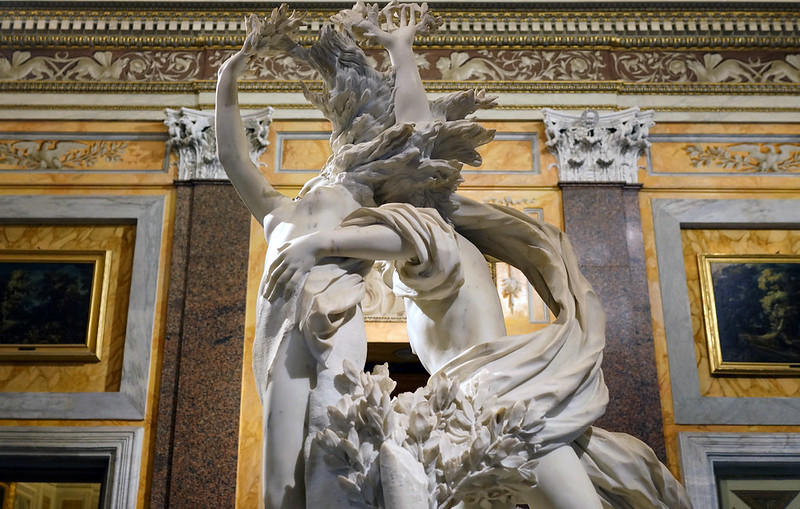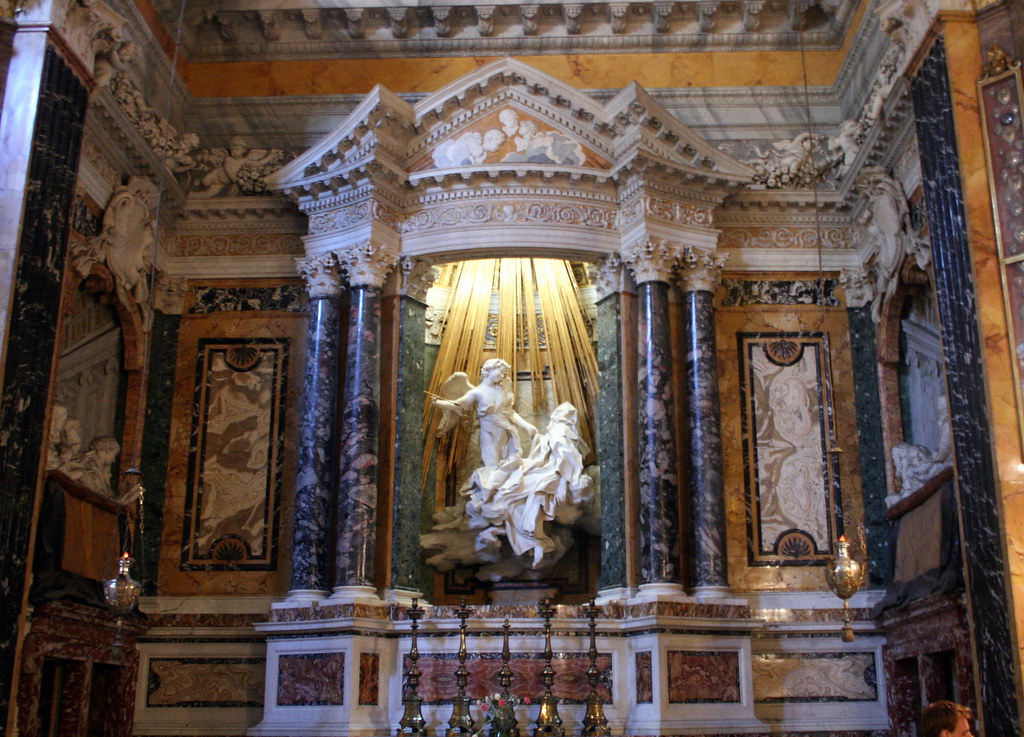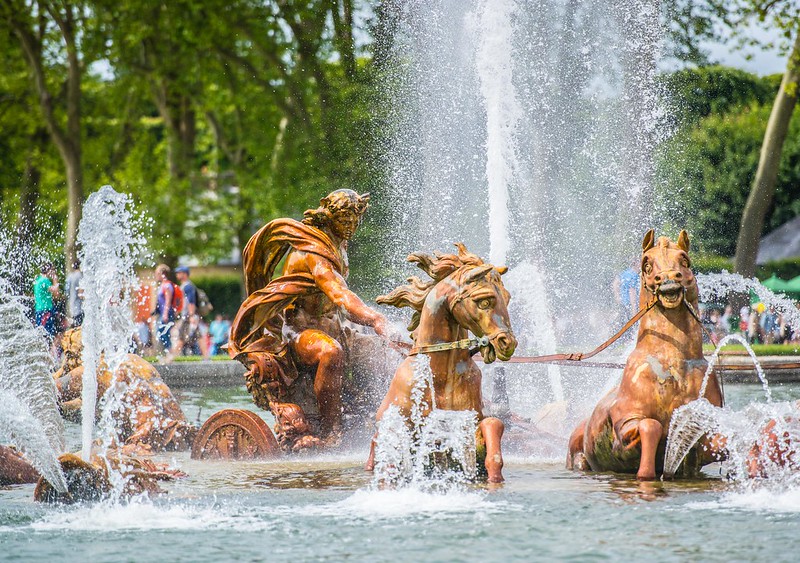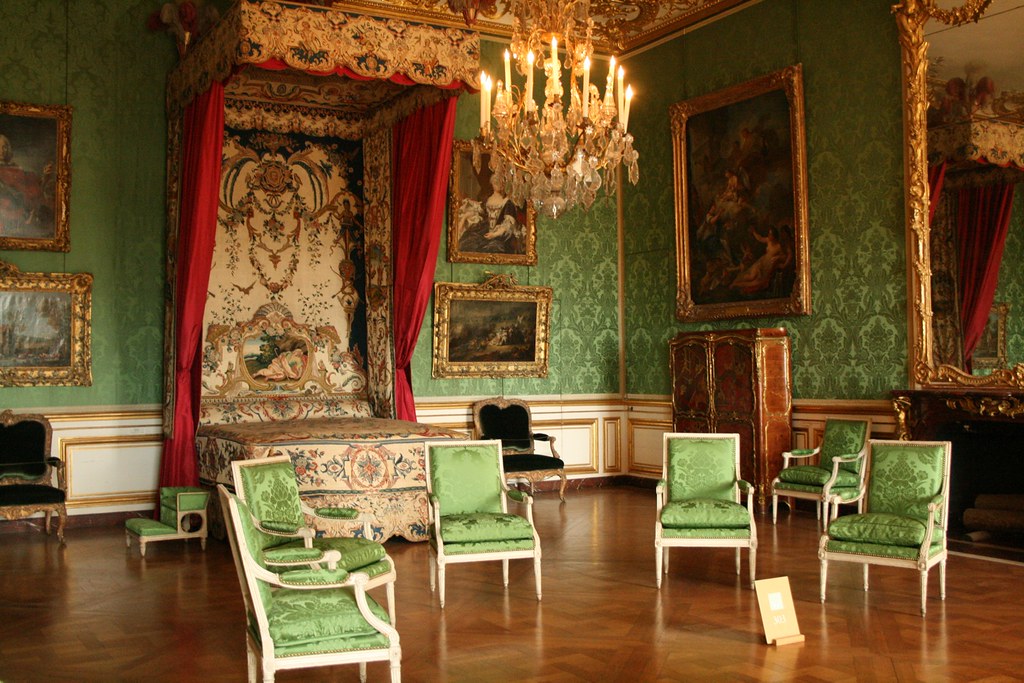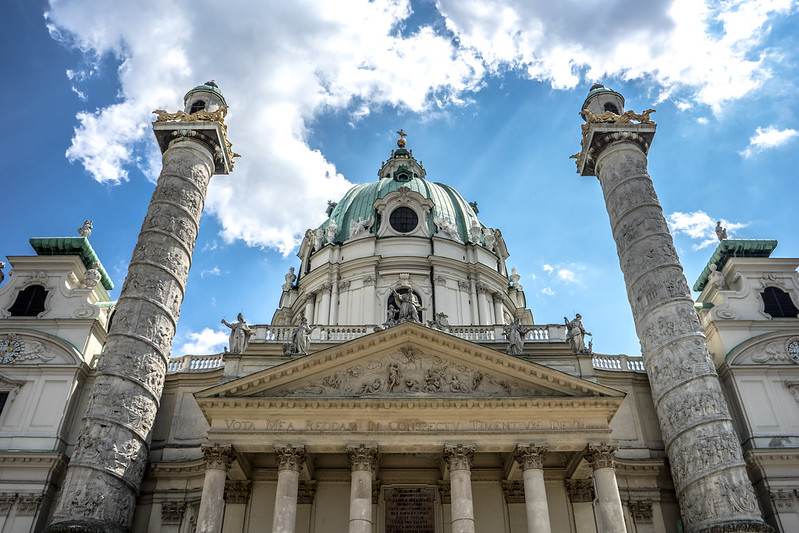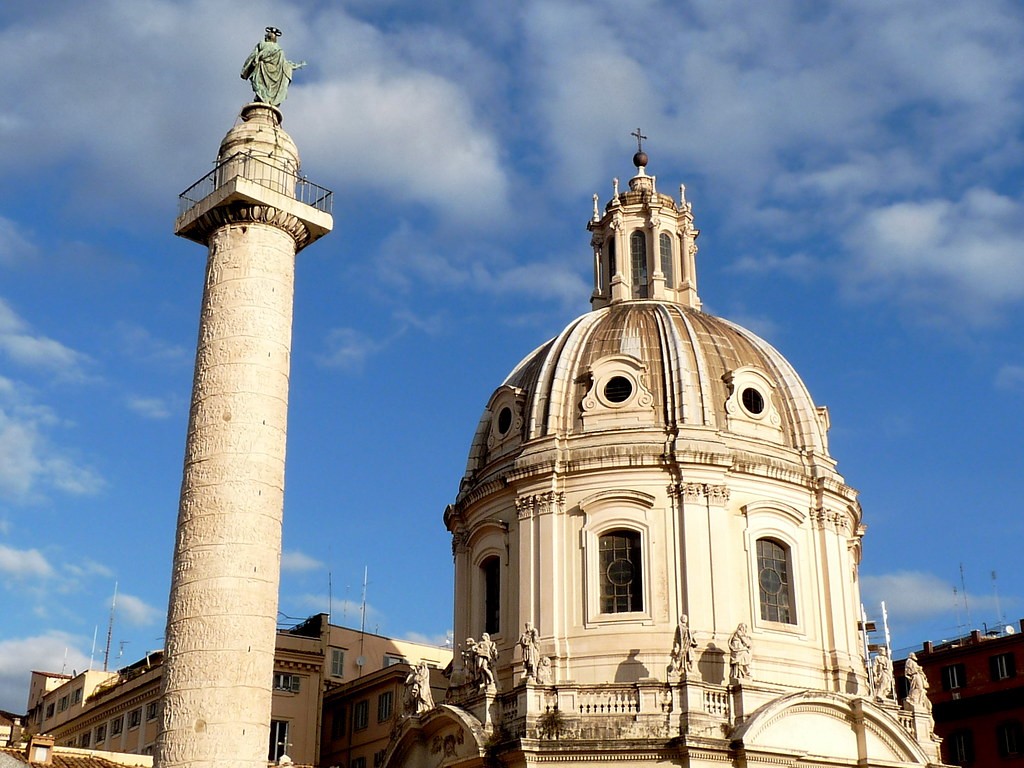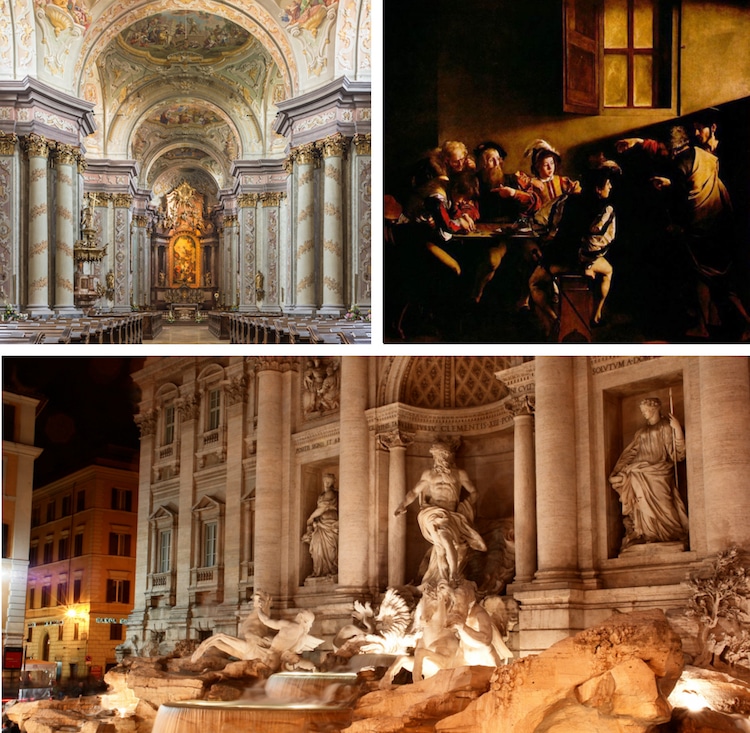
This post may contain affiliate links. If you make a purchase, My Modern Met may earn an affiliate commission. Please read our disclosure for more info.
Throughout the 17th and 18th centuries, European artists and architects adopted an increasingly elaborate style. Known as Baroque, this approach is characterized by an ornate, over-the-top aesthetic that evokes ethereality and aims to inspire awe.
Today, the Baroque period remains one of the most celebrated cultural movements in western art history. Here, we take a look at this flamboyant style, exploring the history and evolution of its exuberant art and architecture.
What was the Baroque period?
Named after barroco—a Portuguese term for an irregularly shaped pearl—the Baroque period is defined by the grandeur and opulence of its art and architecture. With roots in Rome, the movement spread across Italy and other European countries between 1600 and 1750, becoming particularly popular in France, Spain, and Austria.
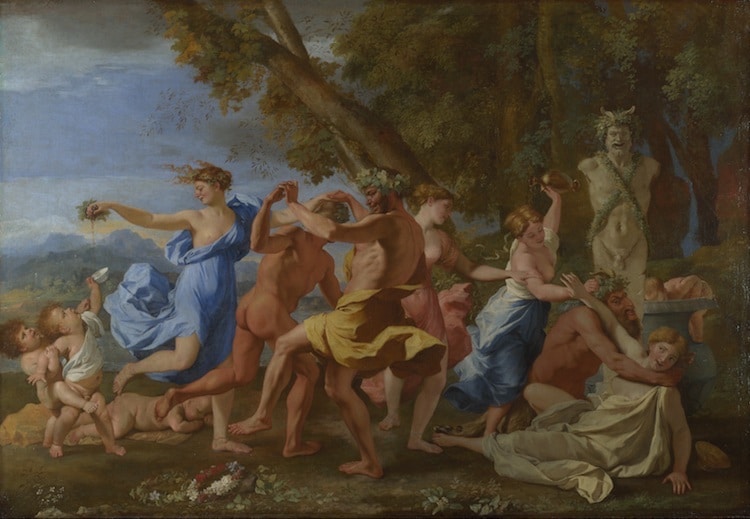
Nicolas Poussin, ‘A Bacchanalian Revel before a statue of Pan' (ca. 1632-1633) (Photo: The National Gallery, London via Wikimedia Commons, Public domain)
What are the major characteristics of Baroque art?
Baroque art and architecture tend to be incredibly extravagant and exhibit movement, tension, emotion, and dramatic use of light and shadow.
As the Baroque period overlapped with the Italian Renaissance, it is not surprising that the two movements shared some stylistic similarities. Both Baroque and Renaissance artists employed realism, rich color, and religious or mythological subject matter, while architects working in both styles favored balance and symmetry. What sets the Baroque style apart from its Renaissance counterpart, however, is its lavishness—a characteristic evident in both its art and architecture.
Baroque Art
Painting
While the subject matter and even style can vary between Baroque paintings, most pieces from this period have one thing in common: drama.
In the work of well-known painters like Caravaggio and Rembrandt, an interest in drama materializes as intense contrasts between beaming light and looming shadows.
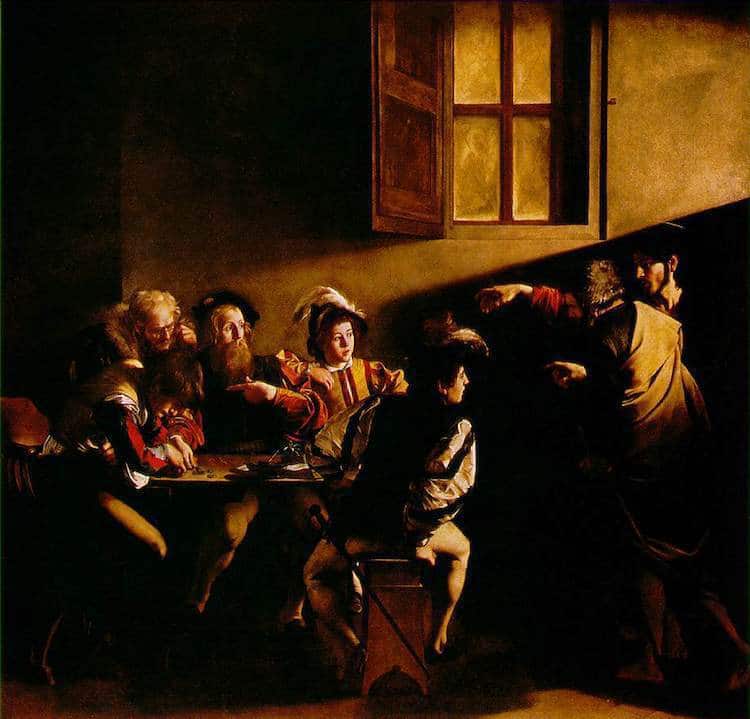
Caravaggio, ‘The Calling of Saint Matthew ‘ (ca. 1599 or 1600) (Photo: Ibiblio via Wikimedia Commons, Public domain)
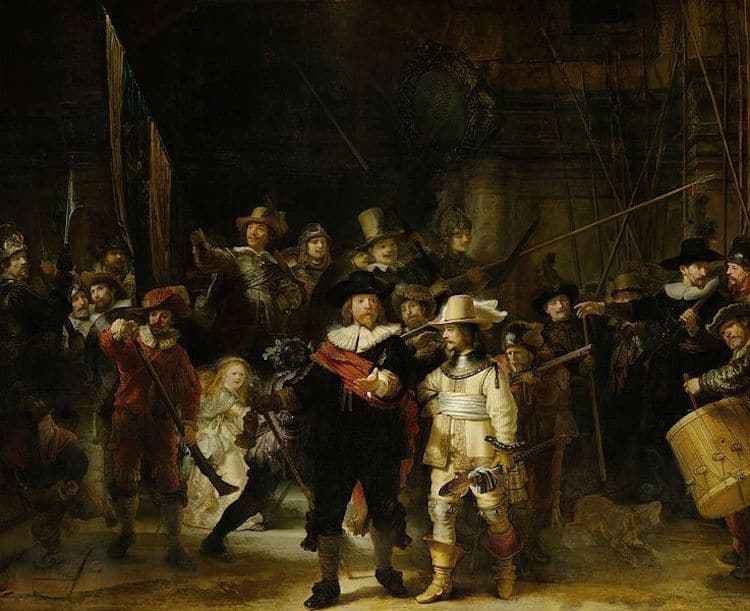
Rembrandt, ‘The Nightwatch' (1642) (Photo: The Rijksmuseum via Wikimedia Commons, Public domain)
Baroque artists like Gentileschi, Poussin, and Rubens achieved a heightened sense of drama through movement. Often, this action-packed iconography was inspired by tales from the bible and stories from ancient mythology.
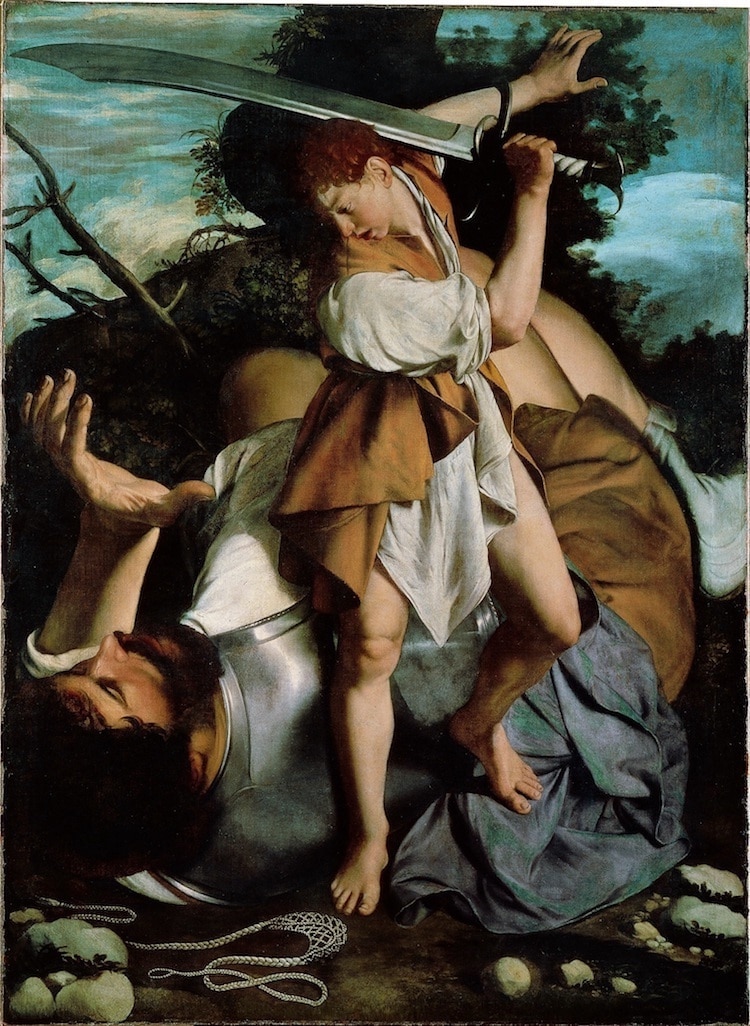
Gentileschi, ‘David and Goliath' (ca. 1605-1607) (Photo: via Wikimedia Commons, Public domain)
In addition to energetic compositions, Rubens captured drama through his rich and radiant color palette. “Rubens avoided painting in such a way that the color sank in. The luminous clarity of his work was proof of the excellence of his technique,” artist Max Doerner explains in The Materials of the Artist and Their Use in Painting. “His colors had so much brilliance and binding medium within themselves, that, like Van Eyck‘s pictures, they had a gloss without needing to be varnished.”

Peter Paul Rubens, ‘Samson and Delilah (ca. 1609-1610) (Photo: The National Gallery, London via Wikimedia Commons, Public domain)
Sculpture
Figurative bronze and marble sculptures produced during this period depict an interest in dynamism. Through swirling silhouettes, twisted contours, and flowing drapery, sculptors like Bernini were able to evoke movement. Added elements like water fixtures often enhanced this theatrical approach.
Like Renaissance statues—including Michelangelo's iconic David—Baroque sculptures were often intended to adorn stately buildings. They also were commissioned for other grandiose settings, like gilded church interiors and royal gardens.
Baroque Architecture and Interior Design
Interiors
Similar to the art of the era, Baroque interiors conveyed an interest in over-the-top grandeur. Furniture and other decorative art objects frequently featured scrolling—a patterned design reminiscent of spiraling foliage—and other elements inspired by the natural world. Similarly, putti—Cupid-like figures—often adorned tapestries and ceiling paintings.
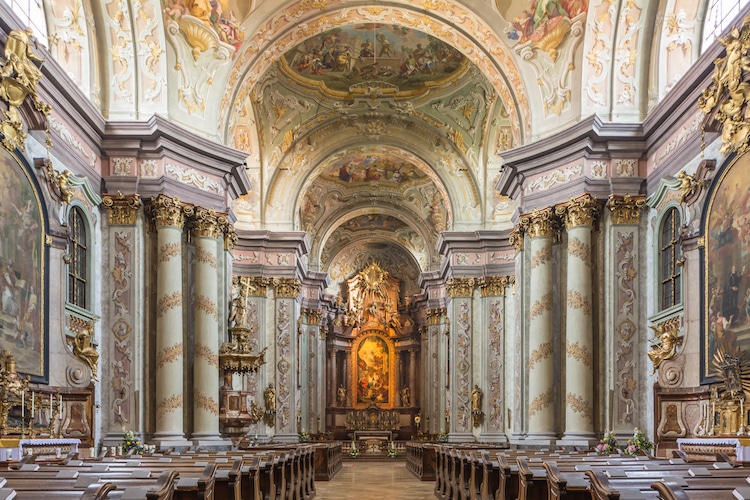
Interior of Herzogenburg Abbey Church, Lower Austria (Photo: Uoaei1 via Wikimedia Commons, CC BY-SA 3.0 AT)
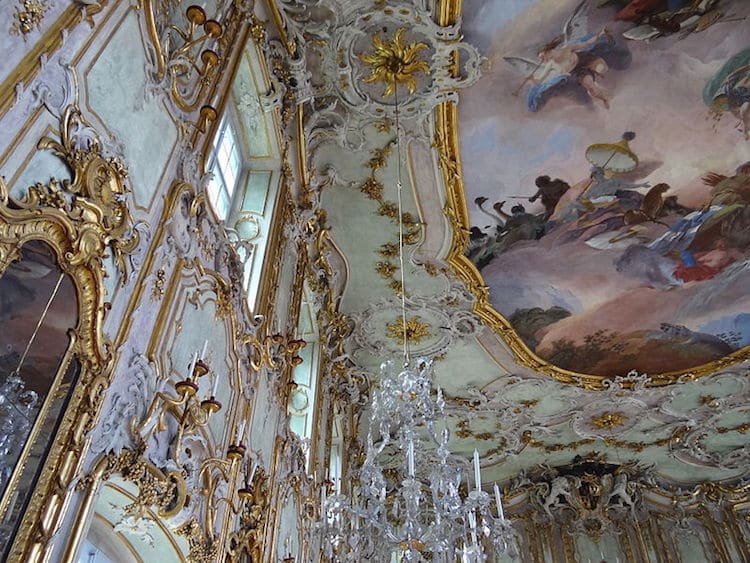
Interior of the Schaezlerpalais, Augsburg, Germany (Photo: Adam63 via Wikimedia Commons, CC BY-SA 3.0)
As expected, the materials used to craft these interiors exuded luxury, as evident in the “rich velvet and damask furnishings and gilt-wood and marquetry furniture” (Victoria and Albert Museum) often found inside palaces.
Exteriors
Baroque architecture is also characterized by ornamentation. Often, the façades of Baroque buildings are adorned with intricate relief carvings, gilded accents, and columns—namely, Solomonic columns, whose corkscrew aesthetic was favored by architects from Spain to Austria.
Architects all over Europe also topped many Baroque basilicas, churches, and other edifices with domes. Besides oval domes, which were erected all over the continent, the preferred style of domes typically varied by region, with onion domes prevailing in Central Europe and bulbous domes proving popular in Germany.
Above all else, Baroque architecture conveyed a preference for balance.
Famous Baroque Artists
Caravaggio (1571–1610)
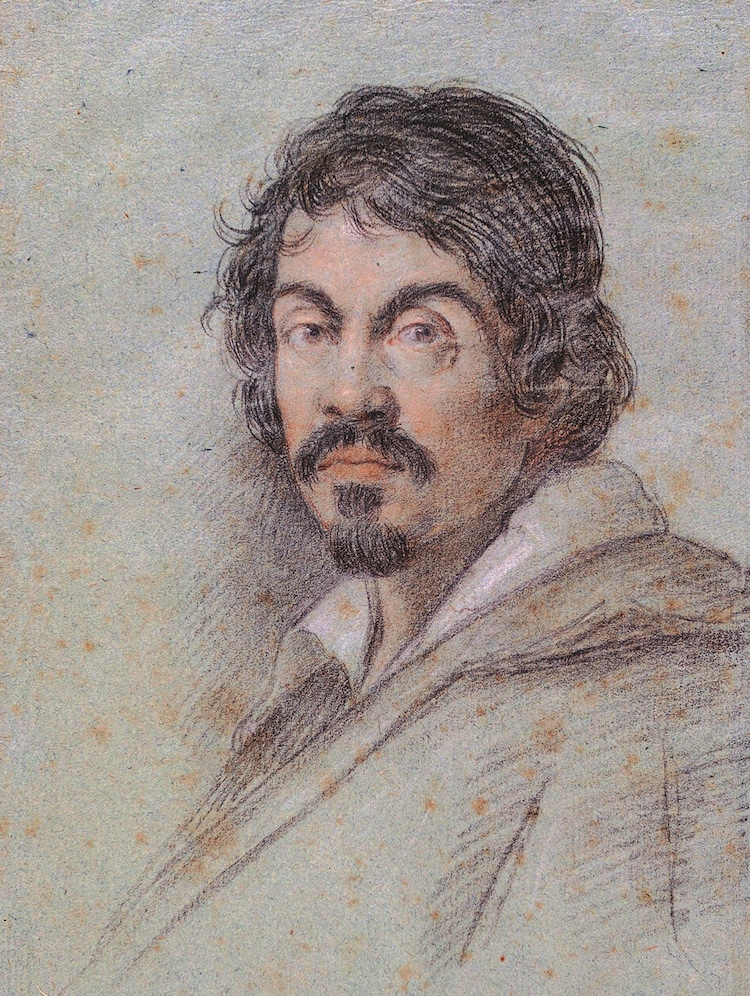
Portrait of Carvaggio by Ottavio Leoni, c. 1621 (Photo: Biblioteca Marucelliana via Wikimedia Commons)
Baroque painter Michelangelo Merisi—better known as Caravaggio—led a passionate and turbulent life. His artistic legacy is just as evocative in style and technique. Never before had an artist used “normal” people as the models for paintings of biblical characters. Furthermore, his masterful use of extreme light and dark, or tenebrism, added an unparalleled psychological drama to his paintings.
Famous works of art: The Calling of Saint Matthew (1599–1600), David with the Head of Goliath (1610)
Peter Paul Rubens (1577–1640)

Peter Paul Rubens, “Portrait of the Artist,” 1623 (Photo: Wikimedia Commons, Public Domain)
Sir Peter Paul Rubens was a prominent Flemish Baroque painter who lived during the Dutch Golden Age. His distinct style emphasized color, movement, and drama—all key characteristics of the Baroque period. Known for his voluptuous women, opulent colors, and dynamic compositions, Rubens established himself as a prominent court painter for the Spanish Hapsburgs, developing an international reputation as an artist and diplomat.
Famous works of art: Marie de' Medici cycle (1620s)
Artemisia Gentileschi (1593–1656)
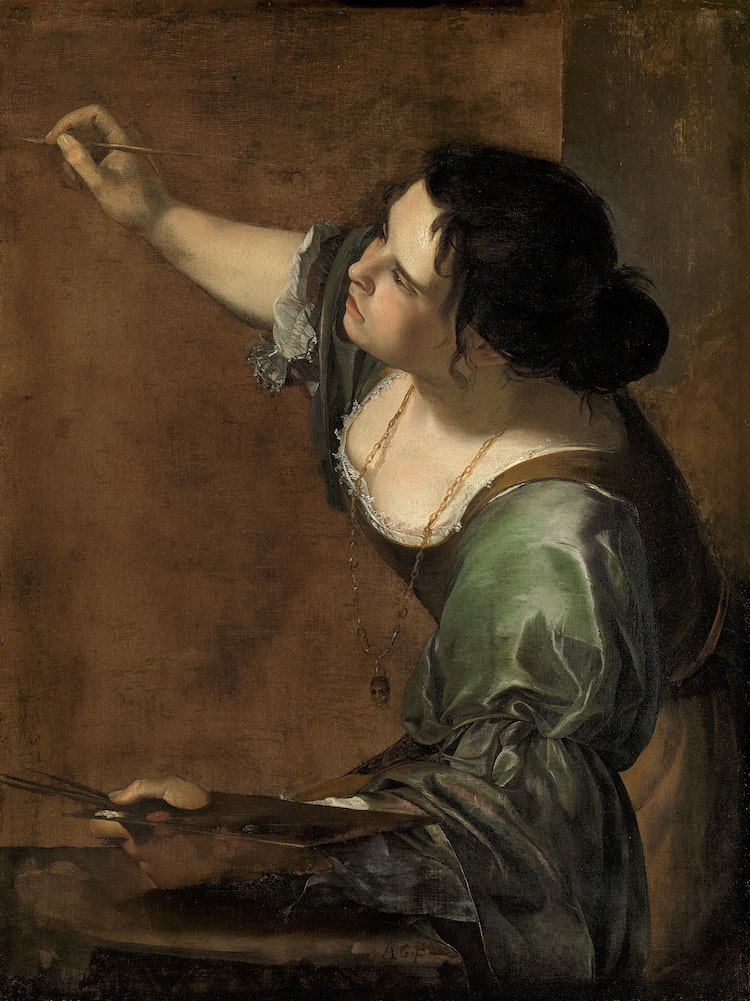
Artemisia Gentileschi, “Self-Portrait as the Allegory of Painting,” 1638–1639 (Photo: Wikimedia Commons, Public domain)
As the daughter of an accomplished painter, Artemisia Gentileschi was afforded access to the art world at a young age. Early on she was in her father's workshop mixing paints and he supported her career when he noted that she was exceptionally gifted. As a noted painter of the Italian Baroque period, Artemisia Gentileschi did not let her gender hold her back from her subject matter. She painted large-scale Biblical and mythological paintings, just like her male counterparts, and was the first woman accepted to the prestigious Fine Art Academy in Florence.
Famous works of art: Judith Slaying Holofernes (1614–1620)
Gian Lorenzo Bernini (1598–1680)
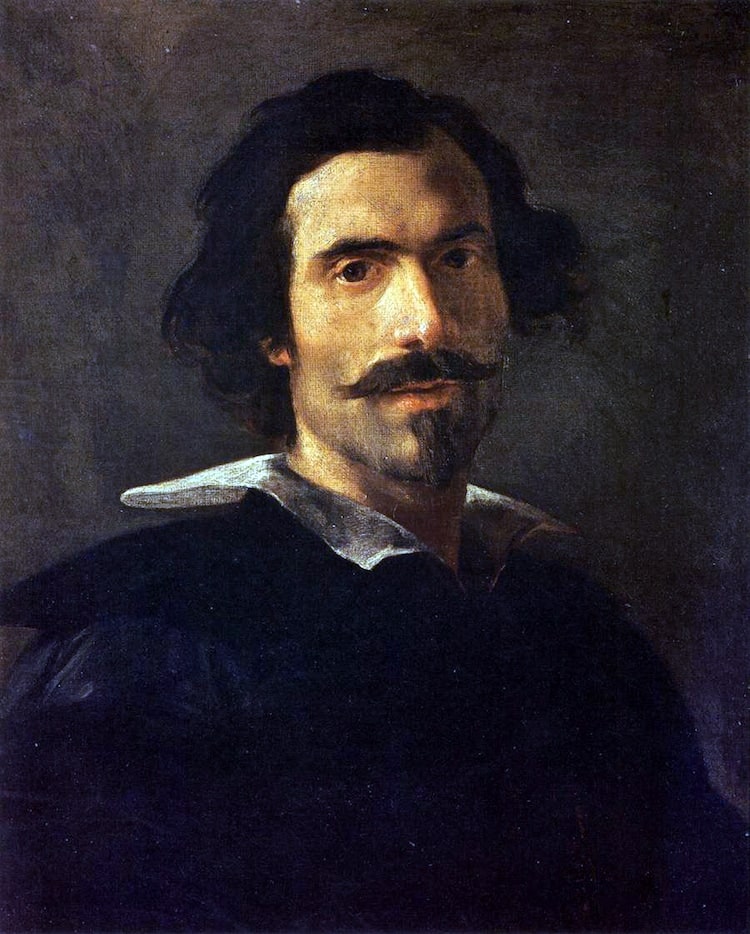
Gian Lorenzo Bernini, “Self Portrait,” c. 1635 (Photo: Uffizi via Wikimedia Commons, Public domain)
Perhaps no other artist defines the Baroque era more than Gian Lorenzo Bernini, whose impressive career spanned nearly 70 years. As a child prodigy, Bernini was creating large-scale marble sculptures as a teen. Later, he would become the architect of St. Peter's Basilica—following in Michelangelo's footsteps—where he created the Basilica's iconic plaza and colonnade, as well as its central bronze canopy. A master of materials, Bernini is known for his astonishing ability to create movement and bring forth emotion with his work. In his hands, marble transforms into soft flesh that looks so real, that you want to reach out and squeeze it.
Famous works of art: The Rape of Proserpina (1621–1622), The Ecstasy of Saint Theresa (1647–1652)
Legacy of the Baroque Style
Though the Baroque style emerged centuries ago, it remains one of the most beloved movements in art history. Whether gazing at a priceless collection of paintings in the Louvre or throwing a coin in Rome's popular Trevi Fountain, the lasting legacy of Baroque art and architecture is as obvious as its opulence.

Nicola Salvi, The Trevi Fountain' (1732-1762) (Photo: RoyFokker via Wikimedia Commons, Public domain)
Frequently Asked Questions
When was the Baroque period?
With roots in Rome, the Baroque movement spread across Italy and other European countries between 1600 and 1750, becoming particularly popular in France, Spain, and Austria.
What does “Baroque” mean?
The Baroque style is named after barroco—a Portuguese term for an irregularly shaped pearl.
What is the Baroque period known for?
The Baroque period is defined by the grandeur and opulence of its art and architecture.
What is the Baroque style?
The Baroque style tends to be incredibly extravagant and exhibits movement, tension, emotion, and dramatic use of light and shadow.
How is Baroque sculpture different from classical sculpture?
Sculptures produced during the Baroque period depict an interest in dynamism and movement through swirling silhouettes, twisted contours, and flowing drapery.
This article has been edited and updated.
Related Articles:
How Flowers Blossomed Into One of Art History’s Most Popular Subjects
What We Can Learn From the Exquisite History and Ornate Aesthetic of Gothic Architecture
Magnificent Art Nouveau Architecture of the Great Antoni Gaudí
